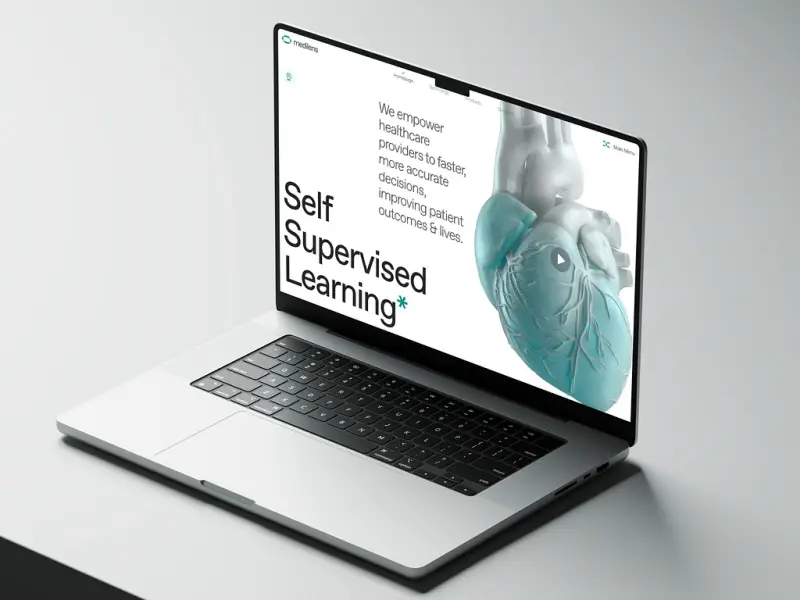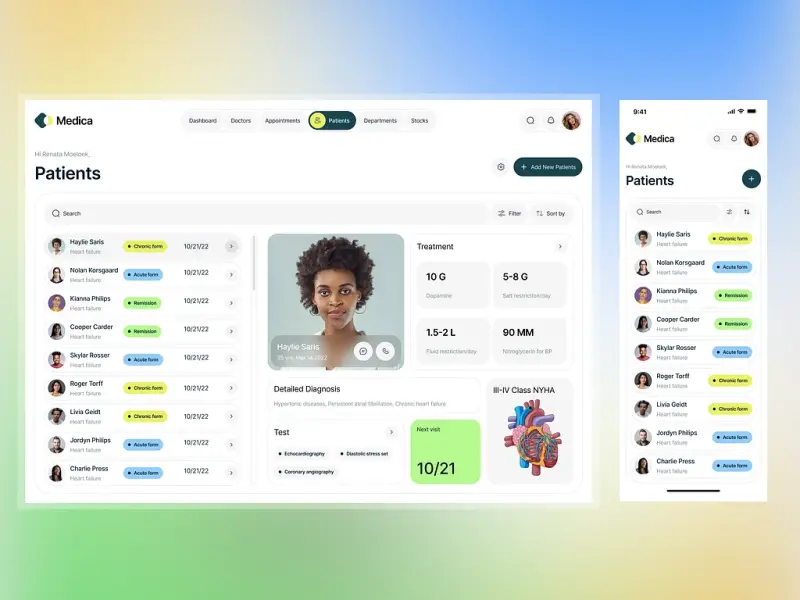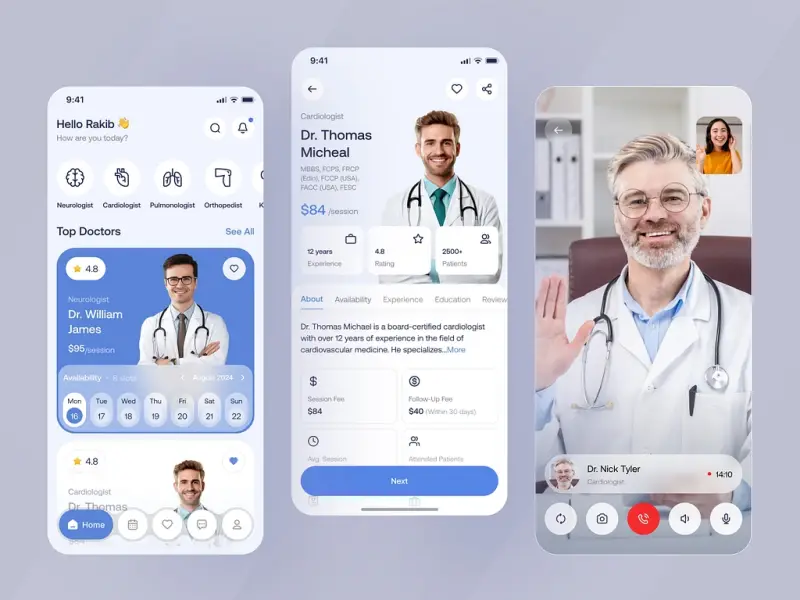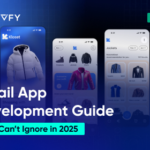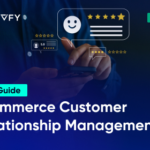MVP in Healthcare: Key Steps to Create Patient-Centered Solutions
- David Ho
- January 20, 2025
- Knowledge, Best practices
- 0 Comments
Creating a healthcare software product can feel overwhelming, especially if you’re navigating the complexities of an unfamiliar industry. But with the right approach, you can turn your innovative idea into a tangible solution that improves lives and meets industry standards.
One of the most effective strategies for building a minimum viable product healthcare solution is starting with an MVP (Minimum Viable Product). For years, leading software companies have embraced the MVP approach to efficiently develop and launch life-changing, compliant healthcare technologies for patients and providers. By taking this strategic first step, you can accelerate your healthcare innovation journey while minimizing risks and costs.
Let’s dive deeper into how the MVP strategy can help you overcome challenges and seize opportunities in healthcare product development.
I. The Benefits of Launching an MVP in Healthcare
Are you a healthcare startup looking to enter the market while minimizing risks and maximizing impact? Developing a Minimum Viable Product (MVP) can be a game-changer. Let’s explore the key business advantages of starting with an MVP in healthcare, especially for startups aiming to innovate efficiently:
1. Optimize Time and Costs with a Healthcare MVP
Developing an MVP in healthcare is faster and more affordable compared to full-scale healthcare software development, making it ideal for startups. For startups, this makes MVPs an excellent cost-saving and time-efficient strategy!
-
Timeline Advantage: The average MVP development cycle takes 3 to 6 months while creating a fully-featured healthcare application can stretch to 12 months or more. That’s a major time difference for startups eager to launch quickly.
-
Cost Efficiency: Full-scale development requires significant investments in design, coding, and quality assurance—but there’s no guarantee your solution will succeed. An MVP, on the other hand, limits these upfront costs while still allowing you to test your idea in the market.
Key Takeaway: Both MVPs and full-featured healthcare apps face similar market risks—but an MVP is faster, more affordable, and gives you the opportunity to get real feedback early on. Why spend a year building something when you can test your idea within months?
| MVP | Full-Featured Product |
|---|---|
| 3-6 months | 12+ months |
| More affordable | Expensive |
2. Validate Your Ideas with Real Users
Startups often rely on marketing hypotheses to guide their decisions, but these ideas need validation. The sooner you test your healthcare app with real users (patients, providers, or administrators), the sooner you can refine your product and roadmap.
MVP in Healthcare
With a minimum viable product healthcare solution, you can quickly uncover valuable insights like:
- Whether your product resonates with your target audience.
- Which features are essential to expand upon?
- Features that might be unnecessary or redundant.
- Real-world feedback to guide your next development steps.
- Issues and bugs to address before scaling.
Key Takeaway: Launching an MVP in the healthcare market lets you align your app with actual user needs. Real feedback helps you fine-tune your vision, improve your roadmap, and make informed decisions at a fraction of the cost of full-scale development.
Still want to see more Healthcare articles? Check here:
3. Enter the Market Faster
In the highly competitive healthcare software market, being early can make all the difference. Opting for an MVP in healthcare allows you to occupy your niche ahead of competitors, giving you a strategic market advantage.
Here’s how launching an MVP fast-tracks your success:
- Killer Features First: Focus on delivering your core, game-changing features to a limited group of users. Once they see the value, you’ll have the opportunity to build trust and long-term loyalty.
- Investor Appeal: A live MVP with real users demonstrates your product’s potential and makes it easier to attract funding.
Key Takeaway: If breaking into the healthcare app market quickly is your goal, MVP development is the way to go. You’ll meet customer needs faster, gain traction, and attract investors—all while staying ahead of the competition.
II. The MVP in Healthcare Development Process
Building an MVP in healthcare is an exciting yet intricate process, offering a pathway to create innovative, patient-centered solutions effectively. It requires careful planning, collaboration, and execution to create a solution that meets the needs of patients, providers, and other stakeholders while adhering to strict industry regulations.
Let’s break down the key stages of healthcare MVP development in detail:
1. Cross-Department Research & Ideation
Every MVP in healthcare starts with a thorough exploration of the market and the identification of niche opportunities tailored to patient and provider needs. This is the foundation of your healthcare MVP.
At this stage, it’s essential to bring together a cross-functional team of experts from marketing, development, and business domains. This diverse team will collaborate to brainstorm ideas and reach a consensus on the unique selling points (USPs) and core features that will make your MVP stand out.
Key Questions to Answer:
- What healthcare problems or conditions will your MVP address?
- How will its core features benefit patients, doctors, and other users?
- Are these features sufficient to resolve the targeted health issues effectively?
- Can these features be developed within the required timeline and budget?
Pro Tip: At this stage, focus on identifying the minimum features that deliver maximum impact, especially for a minimum viable product healthcare application designed to scale effectively.
2. Conception, Workflow, and Compliance Design
Once you’ve identified your MVP’s purpose and value, the next step is to create a clear project structure and roadmap. This stage is all about planning and organizing your MVP development process for smooth execution.
Key Deliverables:
- MVP Business Model: Define how your MVP will provide value to users and generate revenue.
- Service Offerings & Delivery Plan: Decide how you’ll deliver your MVP to early users and gain their feedback.
- Audience Definition: Create a detailed profile of your target audience, including patients, providers, or other users.
- Project Team Structure: Align your team with your MVP’s business model and goals.
- Legal Compliance Plan: Ensure your MVP adheres to relevant healthcare regulations like HIPAA, GDPR, or local compliance standards.
- MVP Roadmap: Outline a step-by-step timeline for feature development, testing, and release.
Pro Tip: Compliance should be baked into your project from the very beginning. A robust legal and regulatory plan will save time and prevent costly setbacks.
Minimum Viable Product healthcare
3. Feature and Tech Stack Identification
Now, it’s time to decide what your MVP in healthcare will include, how it will address key challenges, and how it will be built for long-term success. This stage is crucial for turning your ideas into actionable development plans.
Key Outputs:
- A prioritized list of core MVP features to design and implement.
- Decisions on platforms for deployment, such as mobile, web, or a combination of both.
- Selection of specific technologies, frameworks, and programming languages to build your MVP.
- Identification of the technical skills and team members needed for development.
- Development of an encryption and security strategy to ensure compliance with privacy regulations like HIPAA, GDPR, and interoperability standards in healthcare data management.
Pro Tip: Focus on scalability when choosing your tech stack. Your MVP should be built with future growth and feature expansions in mind.
4. MVP Design, Development, and Iteration
Once the planning and preparation are complete, it’s time to roll up your sleeves and start building your healthcare MVP. This stage involves translating your ideas into a practical, usable product.
Steps to Follow:
- Assemble Your Team: Ensure you have the right mix of developers, UI/UX designers, quality assurance experts, and an experienced project manager to oversee the process.
- Break Down Tasks: Divide your MVP project into smaller, manageable tasks with clear timelines.
- Set Your Budget: Confirm funding for each phase of development to avoid surprises down the line.
- Design and Develop: Create intuitive, user-friendly designs and begin coding the core features of your MVP.
- Quality Assurance: Test your MVP thoroughly to ensure it performs well, meets security standards, and is free of critical bugs.
- Release Your MVP: Launch your product to a limited group of early users.
Have a Project Idea in Mind?
Get in touch with experts for a free consultation. We’ll help you decide on next steps, explain how the development process is organized, and provide you with a free project estimate.
III. Real-Life Success Stories of Healthcare MVPs
Wondering how an MVP in healthcare works in the real world? These case studies highlight how top companies turned their minimum viable product healthcare solutions into industry-leading platforms:
- Zocdoc
Zocdoc, a platform for booking medical appointments, launched as an MVP in a limited market to test its concept. By collecting user feedback and refining its features, Zocdoc evolved into a widely-used platform that helps patients connect with healthcare providers effortlessly. - Oscar Health
Oscar Health, a tech-driven insurance provider, began with an MVP targeted at a specific demographic. This focused approach allowed the company to refine its services based on user input. Today, Oscar Health is a leading insurer known for its innovative, customer-first approach. - HealthTap
HealthTap, a telemedicine pioneer, initially launched an MVP to test the idea of connecting patients with doctors online. By starting with basic functionality, HealthTap gathered insights, improved its platform, and scaled to become a comprehensive virtual healthcare solution used by millions.
IV. The Unique Challenges and Opportunities of Health Tech Development
The healthcare industry is one of the most complex and high-stakes fields for digital innovation. From addressing a diverse user base to meeting stringent regulatory requirements, building healthcare products requires meticulous planning and execution. However, these challenges also create a wealth of opportunities to innovate and make a meaningful impact.
MVP in healthcare challenges
Here’s a closer look at some of the key challenges and how an MVP can help address them:
1. Navigating Data Diversity with Virtual Records
Healthcare software must handle a wide variety of data types, such as medical records, insurance details, lab results, and more. This diversity can be overwhelming, but leveraging APIs (Application Programming Interfaces) can simplify the process by enabling seamless access to multiple data sources. Developers can create versatile, comprehensive products that integrate these diverse data streams.
Additionally, there is a growing demand for offline-accessible healthcare products, especially for home care services. For example, digital health solutions that allow patients to access their medical records without an internet connection can greatly enhance accessibility and usability.
2. Ensuring Compliance and Security
Regulatory compliance is non-negotiable in healthcare. Whether it’s HIPAA in the United States or GDPR in Europe, staying compliant with ever-evolving regulations is a major challenge. Failing to adhere to these laws can lead to hefty fines, reputational damage, and even legal consequences.
Security is equally critical, as healthcare apps handle highly sensitive patient data. Developers must implement robust measures—such as encryption, secure data backups, and rigorous access controls—to prevent breaches and protect patient privacy.
How MVPs Help: By focusing on core functionalities, MVPs allow you to prioritize compliance and security from the start. You can refine these features over time while ensuring your product meets regulatory and safety standards.
3. Tackling the Complex Healthcare Ecosystem
The healthcare landscape is teeming with stakeholders, including patients, providers, researchers, regulators, insurers, and technology partners. Each of these groups has distinct needs and expectations, creating a highly interconnected ecosystem.
Building a product that appeals to everyone is no small feat. For instance, patients may prioritize ease of use and accessibility, while clinicians value accuracy and efficiency. The key lies in designing solutions that cater to all stakeholders while emphasizing seamless interaction between them.
How MVPs Help: MVPs enable you to focus on solving a specific pain point for a targeted group of users. By starting small and gathering feedback, you can gradually expand your product to meet the needs of the broader ecosystem.
4. Overcoming Long Development Cycles
Healthcare product development is often a lengthy process, involving multiple layers of testing, compliance checks, and approvals. This can delay your time to market and increase costs, especially for startups with limited resources.
How MVPs Help: An MVP shortens the development cycle by focusing on essential features. This allows you to launch quickly, gather user feedback, and prove your concept—saving time and money in the process.
Still want to see more Healthcare articles? Check here:
5. Achieving Interoperability
In healthcare, interoperability—the seamless communication between different systems and devices—is critical for delivering optimal patient care. Unfortunately, many existing systems lack standardization, making it difficult for them to work together.
How MVPs Help: By focusing on interoperability from the start, you can design an MVP that integrates with existing systems and sets the stage for future scalability. This approach ensures your product can adapt to the evolving needs of healthcare organizations.
6. Addressing Pain Points and Driving Patient Engagement
Healthcare providers must balance two competing priorities: delivering high-quality care and managing costs. Digital solutions can help providers achieve this balance by streamlining processes and improving patient outcomes.
For example, a well-designed Electronic Health Record (EHR) system can reduce errors and make it easier for providers to manage patient information. Similarly, patient portals empower users to take a more active role in their health by giving them 24/7 access to their medical records, appointment scheduling, and communication tools.
How MVPs Help: By launching an MVP, you can identify the most pressing pain points and test solutions that improve efficiency and engagement. Early feedback from patients and providers will guide you in refining your product to better meet their needs.
7. Incorporating Customer Feedback
Healthcare is an ever-evolving field, with new technologies and treatments emerging regularly. To stay relevant, your product must adapt to the changing needs of patients, providers, and regulators.
How MVPs Help: An MVP gives you the opportunity to gather real-world feedback from users early on. This input is invaluable for shaping your product roadmap, identifying areas for improvement, and ensuring your solution remains aligned with industry trends.
Conclusion
In today’s fast-evolving healthcare industry, building an MVP isn’t just a smart choice—it’s the key to delivering innovative, patient-focused solutions efficiently. By starting small, you can validate your ideas, address real-world pain points, and create a product that meets both user needs and regulatory demands.
At TECHVIFY, we don’t just build software—we partner with you to craft intelligent, regulatory-compliant healthcare solutions that solve real-world problems. Our team of experienced developers, UI/UX designers, and healthcare industry experts will work closely with you to turn your vision into a tangible, market-ready MVP.
TECHVIFY – Global AI & Software Solution Company
From Startups to Industry Leaders: TECHVIFY prioritizes results, not just deliverables. Accelerate your time to market and see ROI early with high-performing teams, AI (including GenAI) Software Solutions, and ODC (Offshore Development Center) services.
- Email: contact@techvify.com.vn
- Phone: (+84)24.77762.666




